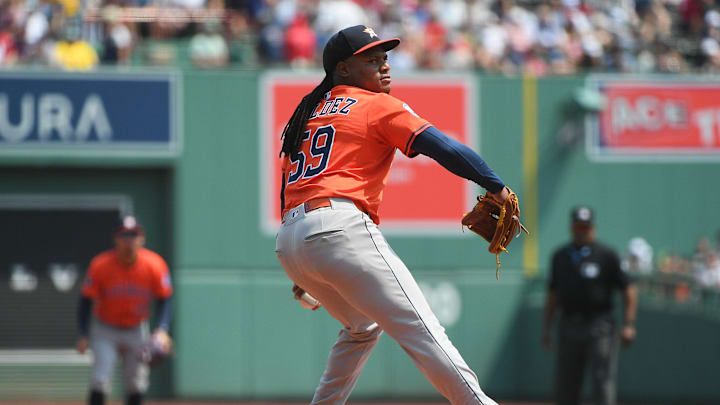After their postseason exit, the Boston Red Sox head into the offseason with a huge goal: to fix the starting rotation. For all of Boston's progress under the Chief Baseball Officer Craig Breslow, the lack of a reliable, top-end starting rotation proved costly when the stakes rose in October. If the Red Sox intend to bolster in that area, their path forward has to run through free agency, not by trade.
Breslow provided a clear message during the team's season-ending press conference on Monday. The organization understands that internal development alone won't close the gap. While young arms like Payton Tolle and Connelly Early have offered promise, Boston still lacks the proven durability and swing-and-miss dominance needed to navigate a full season and survive the postseason.
Examining the Free Agent Starters
The winter's free-agent market presents an opportunity that the Red Sox can't afford to ignore. The team could channel those savings from the Devers trade into high-end pitching talent signings. Names like Framber Valdez, Dylan Cease, Zac Gallen, and Michael King will be unrestricted free agents after the playoffs. Some other possible pitchers could be Shota Imanaga, Freddy Peralta, Chris Sale, or Jack Flaherty.
Imanaga has a conditional club option with the Chicago Cubs for the next year, worth $20.5 million. Whether or not the Cubs want to pick it up is on their end entirely. Peralta and Sale both have club options as well: Peralta for $8 million and Sale for $18 million. As for Flaherty, he has a player option worth $20 million. Since he's only 29 and will be 30 at the true ending of his contract, along with their playoff runs, he may use that $20 million as an excuse to stay in Detroit.
For a club that's cycled through short-term stopgaps and mid-rotation arms for years, adding a legitimate number two arm or even a co-ace must be the priority this offseason. Boston's pitching proved serviceable in 2025, ending with the fifth-lowest ERA (3.70) in the statsheet, only behind the Rangers, Brewers, Padres, and Guardians.
The offense, amid uncertainty around Triston Casas, remains deep enough to compete. But without dependable starters (besides Crochet) capable of working deep into games, Breslow's roster construction will always be at a disadvantage in October.
Just as importantly, free-agent acquisitions would take pressure off Boston's developing pitchers. Rather than forcing Tolle or Early into frontline starters prematurely, the Red Sox could allow them to grow behind established veterans, a balance that many World Series champions in the past, such as Houston and Philadelphia, had mastered.
Best Fits for the Red Sox Rotation
As for the pitchers, the best option for them is Freddy Peralta. He's been consistently a 200-strikeout pitcher since the 2023 season and had a 2.70 ERA this year, the lowest of his seven-year career. The problem is that the Brewers may exercise that $8 million option. If he's not available, the next player fit for the Red Sox would be either Dylan Cease or Michael King. Both players fit Andrew Bailey's system. Cease, while still a consistent 200-strikeout pitcher, has had issues with his knuckle-curve and sinker.
However, his Padres teammate Michael King, a local product from Bishop Hendricken in Warwick, Rhode Island, who also went to Boston College, would be a great fit. Not just for promotional reasons, either.
King is one of, if not the nastiest, pitchers in all of baseball and would be a great fit for the Red Sox and their current regime as well. Emphasizing breaking pitches and stifling hitters with his slider/sinker combo, with the main focus on that sinker. His sinker's at #2 with one of the highest horizontal breaks with an 18.7, striking out 166 batters with that pitch in his six-year career.
The problem with him is that he's been injury-riddled this past season, with both shoulder and knee inflammation, limiting him to only 15 starts. That can indicate a red flag when looking into the future projection of his career. But if that was just a flash in the pan, he'll be fine.
Conclusion
While it's through aggressive pursuit, revisiting trade talks for a controllable arm like Joe Ryan, or targeting a secondary option like Peralta, King, or Cease, Boston must show that it's serious about addressing its rotation. Fans have heard the talk of "sustainability" and "patience" before, and the front office would come up short. The Sox have payroll space and now have the market appeal with a bright future. There should be no excuse as to why a player won't want to play in Boston.
If the 2026 campaign is to mark a true return to contention, Boston can't rely on just potential. While they have a strong farm system and can pick the pieces of who they want, signing a free agent with a proven arm will build a rotation worthy of October.
Payton Tolle and Connelly Early should stay to fill out the spots in their rotation, and the Sox, if they were to trade, should take away the prospects in their system that are currently blocked. Their individual values are more than fair for a trade to a rebuilding team (like the Minnesota Twins). Boston also has players that they need to let go to fix their logjams, both in the infield and in the outfield, and they can also be headliners in those trade packages with those prospects.
